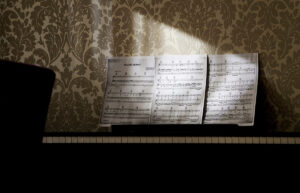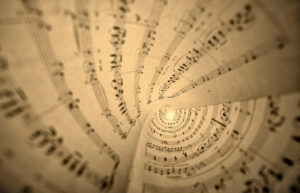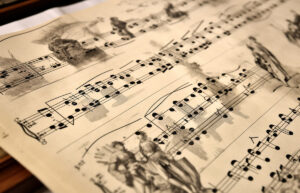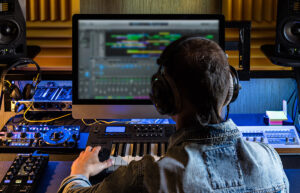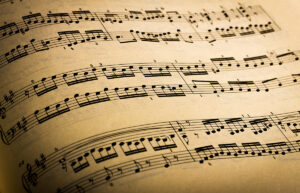What is Syncopation in Music: Meaning, Types, Steps & Examples

Welcome to the rhythmic world of syncopation, where we unravel the mystery behind “What is Syncopation in music” – the secret ingredient that adds groove and vitality to musical rhythms. In this comprehensive guide, we will dive into the essence of syncopation, exploring its definition, historical evolution, significance, various types, methods of identification, ways to master syncopated rhythms, and captivating examples in music. Whether you’re a budding musician or an enthusiast eager to understand the heartbeat of rhythms, this guide is your gateway to unlocking the mesmerizing world of syncopation.
Welcome to TheDemoStop, now join the community!
Connect with artists, fans and producers around the world.
What is syncopation in music?
Syncopation in music involves altering the strong and weak beat patterns involving various rhythms being played together.
Syncopation is a rhythmic technique that adds a unique twist to the timing of musical beats. It involves emphasizing off-beat rhythms or accentuating weak beats in a measure, creating an unexpected syncopated pattern. This technique often challenges the conventional, expected rhythmic flow, adding a sense of unpredictability and liveness to the music.
By playing with the placement of accents and stressing unexpected beats, syncopation adds a sense of energy and movement, making the music more vibrant and engaging. It’s the deviation from the norm that gives syncopated rhythms their distinctive and captivating appeal, drawing both musicians and audiences into a rhythmic journey beyond the expected.
To understand the concept of what is syncopation in music, you must delve into its expressions across diverse genres like jazz, funk, reggae, and other musical styles. This exploration enhances the overall rhythm and introduces an unexpected element of surprise for your listening experience.
History of syncopation in music (Origin & Evolution)
The history of exploring the concept of “what is syncopation in music” is a tale of diverse origins and evolution, showcasing its rhythmic prowess across cultures. Its roots trace back to African musical styles, characterized by off-beat patterns that added depth and complexity to rhythms.
In Western classical music, syncopation made its mark during the Baroque and Classical periods through maestros like Bach and Beethoven. Bach’s “Brandenburg Concerto No. 5” and Beethoven’s “Symphony No. 3” vividly illustrate early uses of syncopated rhythms, introducing a sense of excitement and liveliness into classical compositions.
The advent of jazz in the late 19th and early 20th centuries brought syncopation to the forefront. Icons like Scott Joplin and Duke Ellington pushed boundaries with pieces like “Maple Leaf Rag” and “It Don’t Mean a Thing (If It Ain’t Got That Swing),” introducing syncopation with improvisation and intricate structures, defining the genre’s dynamic nature.
Even in contemporary music, syncopation remains a cornerstone across genres like rock, funk, and pop. Bands like Led Zeppelin and the Red Hot Chili Peppers embraced syncopated rhythms in tracks such as “Good Times Bad Times” and “Give It Away,” underscoring how syncopation continues to shape and elevate modern musical landscapes, asserting its enduring impact and adaptability.
Why is syncopation important?
Syncopation serves as the heartbeat of music, adding rhythm and energy that keeps listeners engaged and intrigued. This rhythmic technique varies from the expected strong beats, creating unexpected accents on weaker or off-beats.
Syncopation adds energy and excitement to musical compositions, adding a dynamic quality that sparks movement and interest. It’s the subtle shift in emphasis that brings a unique groove to the music, making it irresistible to tap your feet or sway along.
From jazz to rock, pop to classical, deciphering what is syncopation in music adds compositions with a sense of unpredictability, breathing life into melodies and rhythms, making it a vital and captivating element in the world of music.
Types of syncopation in music
Exploring the realm of “what is syncopation in music,” various types of syncopation contribute a unique groove and rhythm to songs. Following are the five types:
Suspension Syncopation
Suspension syncopation involves holding a note from the previous chord into the next one, creating a sense of tension before resolving. This delay adds depth and interest by briefly extending the expected rhythm. A good example is seen in classical music like Beethoven’s Symphony No. 5.
Missed Beat Syncopation
Missed beat syncopation involves emphasizing offbeats or skipping expected strong beats within a musical measure, creating unexpected rhythmic patterns. This style adds a unique groove by accenting weaker beats or skipping anticipated strong beats, enhancing musical complexity. Jazz pieces by Duke Ellington or Miles Davis often use this technique.
Even Note Syncopation
Even Note Syncopation involves accentuating regular beats in an irregular manner, disrupting the expected rhythmic flow. This style creates an engaging and syncopated feel by highlighting evenly timed notes in unexpected positions. It’s commonly used in funk music, such as songs by James Brown.
Offbeat Syncopation
Offbeat syncopation emphasises or stresses the offbeats, typically the weaker or unaccented parts of a musical measure, giving a bounce to the music. It adds energy by accenting these offbeats, famously heard in reggae music, such as Bob Marley’s songs.
Anticipation Syncopation
Anticipated syncopation occurs when a note or chord is played or emphasized slightly before its expected placement in the musical phrase, creating tension that resolves into the subsequent beat. This style adds excitement by leading listeners to anticipate the next beat earlier than usual, often found in pop music like Michael Jackson’s “Billie Jean.”
How to identify syncopation in music
Understanding the concept of “what is syncopation in music” might sound complex, but it’s quite interesting once you get the hang of it. Essentially, it’s a rhythmic technique that plays with the natural flow of beats in music. To identify syncopation, listen closely for moments where the accents or stresses fall unexpectedly between the regular beats. It’s like a musical surprise that adds flair and groove to the rhythm.
One way to spot syncopation is when you find yourself tapping your foot or nodding your head offbeat, not in sync with the main pulse of the music. Artists often use syncopation to create a sense of excitement or to make a tune catchy and lively. You might notice it in various music genres like jazz, reggae, or funk.
Keep your ears open for those offbeat accents or unexpected rhythmic patterns – that’s where you’ll find syncopation adding its unique groove to the music!
Welcome to TheDemoStop, now join the community!
Connect with artists, fans and producers around the world.
How to learn syncopation rhythms
Mastering the concept of “what is syncopation in music” might seem difficult, but it becomes an exciting journey with the right approach. Here’s a straightforward guide to get you started:
Listen to syncopated music
Start by listening to syncopated music across genres like jazz, funk, or Latin. Train your ears to recognize the off-beat accents and intricate rhythms. The more you listen to syncopated tunes, the easier it becomes to grasp the essence.
Learn how to count syncopation
Understanding how to count syncopation is crucial. It involves recognizing the beats that fall in between the main pulse. Practice counting out loud or tapping your foot to the primary beats while nodding or clapping to the offbeats. This helps internalize the rhythmic variations.
Practice syncopation with a metronome
Use a metronome to practice syncopation. Start at a slow tempo and gradually increase speed as you become more comfortable. The metronome acts as a guide, helping you stay in time while navigating through syncopated patterns.
Break the standard formula of beat placement
Experiment by breaking away from conventional beat placements. Play around with accents and offbeat rhythms to create syncopated patterns. It’s about bending the rules and exploring new rhythmic territories.
Record rhythms and convert them to MIDI in your DAW
Record your syncopated rhythms and convert them into MIDI using your preferred DAW. This technique lets you visualize and manipulate the rhythms digitally, providing a deeper understanding of the creative possibilities of syncopation.
Examples of tracks with syncopation
Here are noteworthy examples where syncopation adds an irresistible groove:
“Lean On” by Major Lazer
This infectious dancehall anthem by Major Lazer intertwines syncopated beats and lively rhythms, creating an irresistible energy that keeps feet tapping. The song’s fusion of electronic and reggae elements, coupled with syncopation, crafts an undeniably catchy and dynamic vibe.
“Little Lion Man” by Mumford and Sons
In this folk-rock gem, syncopation weaves through the song’s acoustic strums and compelling lyrics. The unexpected emphasis on certain beats infuses the track with a raw, heartfelt energy, amplifying its emotional depth.
“Blue Monday” by New Order
A classic synth-pop hit, “Blue Monday,” showcases syncopation’s prowess within the realm of electronic music. Its pulsating rhythms and innovative use of beats create a hyptonic experience, establishing it as an iconic track with a lasting influence.
“Smooth Criminal” by Michael Jackson
The King of Pop masterfully incorporates syncopation in “Smooth Criminal,” infusing the song with an irresistible groove. The interplay of the bassline, percussive elements, and Michael Jackson’s signature vocals exemplify how syncopation elevates a track’s infectious rhythm.
Conclusion
- What is syncopation in music? Syncopation is a rhythmic technique that adds unexpected accents or stresses to off-beat rhythms, deviating from the conventional expected music flow and creating excitement and liveliness within the music.
- History and evolution of syncopation: Originating from African musical styles, syncopation made early appearances in Western classical music through maestros like Bach and Beethoven. Jazz pioneers like Scott Joplin and Duke Ellington brought syncopation to the forefront, shaping its dynamic nature in music across eras.
- Why is Syncopation important? Syncopation serves as the heartbeat of music, and adds energy, excitement, and an element of surprise into compositions, making them more vibrant and engaging for listeners.
- Types of syncopation in music: Suspension Syncopation, Missed Beat Syncopation, Even Note Syncopation, Offbeat Syncopation, and Anticipation Syncopation are distinctive types, each contributing a unique groove and rhythm to the music.
- How to identify syncopation in music: Spotting syncopation involves recognizing offbeat accents or rhythmic patterns that deviate from the primary beats, creating a musical surprise, and enhancing the song’s groove.
- How to learn syncopation rhythms: To master syncopation, start by listening to syncopated music, learning to count syncopation, practicing with a metronome, breaking conventional beat placement, and experimenting with rhythmic variations.
- Examples of tracks with syncopation: Noteworthy examples include “Lean On” by Major Lazer, “Little Lion Man” by Mumford and Sons, “Blue Monday” by New Order, and “Smooth Criminal” by Michael Jackson, where syncopation elevates the song’s rhythm, making them catchy and irresistible.
FAQs
What is syncopation in music?
Syncopation in music involves emphasizing off-beat rhythms or accentuating weak beats in a measure, deviating from the expected pattern. It adds unexpected syncopated patterns, creating a lively and dynamic musical rhythm.
What are the most common types of syncopation?
The common types of syncopation include Suspension Syncopation, Missed Beat Syncopation, Even Note Syncopation, Offbeat Syncopation, and Anticipated Syncopation. Each type offers unique rhythmic variations and grooves.
Does syncopation mean “offbeat”?
Syncopation involves emphasizing offbeat rhythms or weak beats, but it is more than simply being “offbeat.” It adds a layer of unpredictability to music’s rhythm, enhancing its vibrancy.
How do you identify syncopation?
Listen for moments where accents or stresses fall unexpectedly between regular beats. Syncopation adds a unique groove to the rhythm, making it catchy and lively.
What is the origin of syncopation?
Syncopation traces its roots to African musical styles. It gained prominence in Western classical music during the Baroque and Classical periods and became prominent in jazz, funk, and various contemporary genres.
How to learn syncopation rhythms?
Start by listening to syncopated music across genres, then learn to count syncopation by recognizing betas between the main pulse. Practice with the metronome, break the standard beat placement, and experiment with different rhythms.
What are examples of syncopation in Music?
Tracks like “Lean On” by Major Lazer, “Little Lion Man” by Mumford and Sons, “Blue Monday” by New Order, and “Smooth Criminal” by Michael Jackson demonstrate the captivating use of syncopation across various music genres.
What does suspension syncopation mean?
Suspension syncopation refers to a musical technique where a note from a previous chord is held into the next, creating a temporary dissonance before resolving to a consonant note. This technique adds tension and depth to the music, commonly used in various genres to enhance rhythmic complexity.
What is a simple example of syncopation?
A simple example of syncopation is the snare drum in a jazz rhythm, where the emphasis falls on off-beats, creating a lively and dynamic feel. Another classic example of syncopation can be found in the popular song “Smooth Criminal” by Michael Jackson.


















